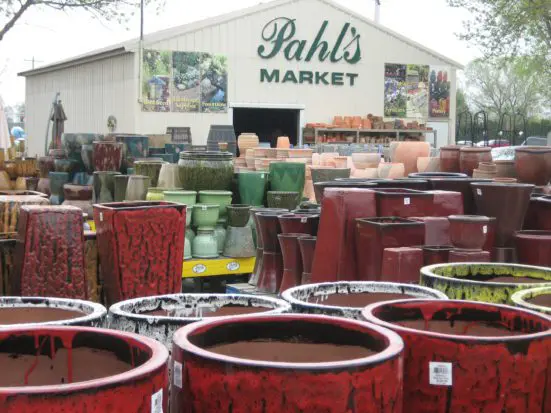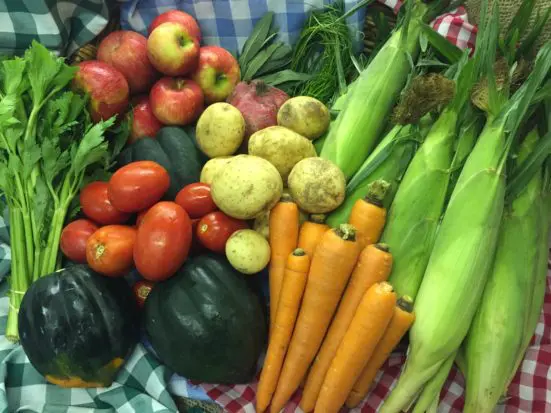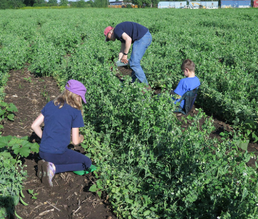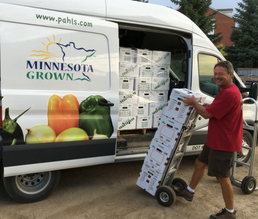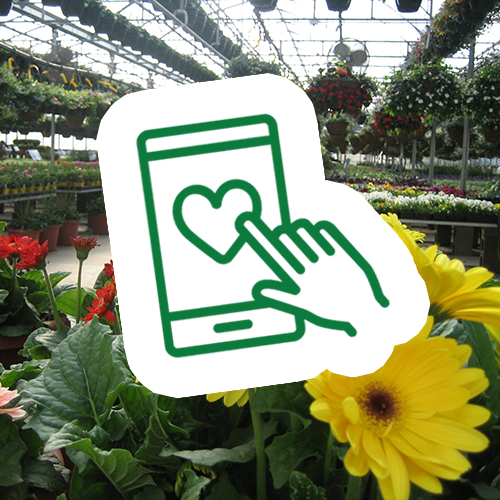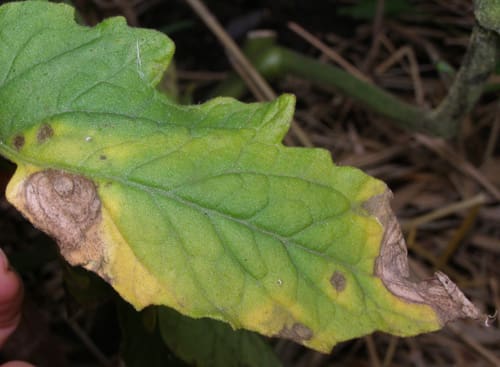In spite of its name, Early Blight can occur in gardens any time during the growing season. The disease commonly affects plants in the Solanaceae family including tomatoes, eggplants, peppers and potatoes. Early Blight is a fungus disease that overwinters in the soil and in plant debris in the garden. When it rains, the spores of the disease are splashed up to the lower leaves of a plant where they develop in about 10 days into the characteristic disease shown in the illustration. Leaves develop distinct “ringed” spots which are surrounded by yellowing. Eventually the leaves fall from the plant. After fruit sets, the developing vegetables become susceptible to sun scald, further damaging the crop. Disease lesions on the stems and fruit appear as sunken dark spots, and can further damage the fruit as it develops. Plants that are vigorous before the development of the disease tend to be able to resist the effects of Early Blight better than weak, underperforming plants. When applying chemical controls for blight on edible crops, be sure to follow the label directions including frequency of application and time to harvest recommendations.
Early Blight Facts:
- Comes from spores in the soil and in left over debris from previous year
- Can occur any time during the growing season
- Causes leaves to fall off plant making fruit susceptible to sunscald
- Use a mulch to help protect the plant from inoculum splashing from the soil onto lower leaves
- Can also affect potato, eggplant and peppers in the garden
- Can start early, but greatest damage is done after fruit set
- Resistant plant varieties are limited but are available
- Good garden maintenance including removal of previous year debris also helps eliminate the disease



